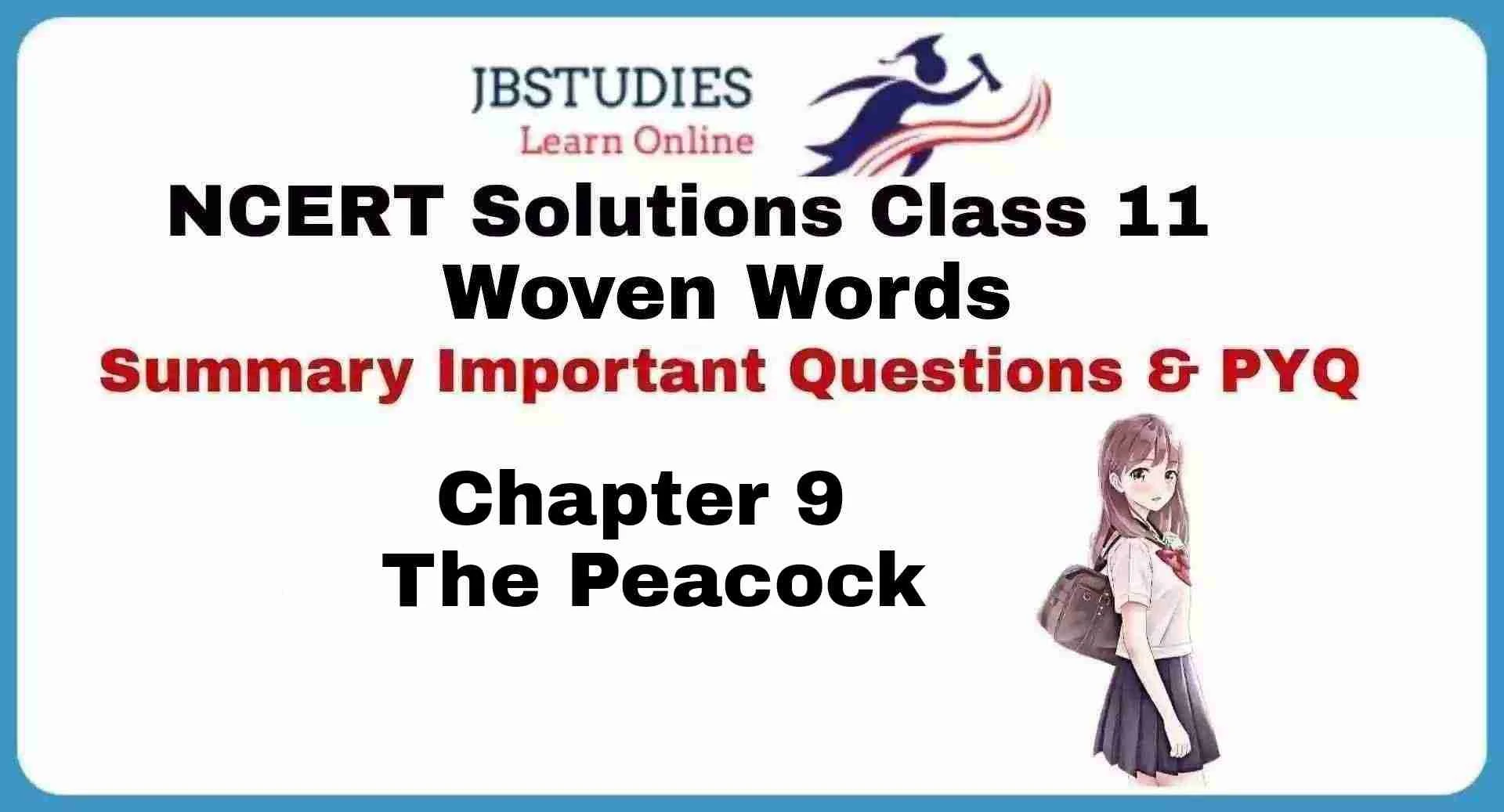NCERT Solutions Class 11 Woven Words (Poetry) Chapter-9 The Peacock
Class 11 (Woven Words )
exercise questions and answers
Chapter-9 (The Peacock)
By Sujata Bhatt
Page No: 108
Word Meanings
Notice these words in the poem and guess their meaning from the context
| turquoise | darts |
Answer
Turquoise: A greenish-blue colour
Dart: To move suddenly and quickly in a particular direction
Understanding the Poem
1. Comment on the lines that make you visualise the colourful image of the peacock.
Answer
The lines which visualises the colourful image of the peacock are:
The poet, when calls the peacock, “a flash of turquoise”, the mind of the reader is filled with colourful image of the peacock.
The phrase “the slender neck” portrays the sleek figure of the peacock and the grace with which it poses.
“A blue shadow” again casts a wonderful image of peacock.
The poet talks about the beautiful eyes of the peacock, “Those dark glowing eyes violet fringed with golden amber”.
2. What are the cues that signal the presence of the peacock in the vicinity?
A loud sharp call, flash of turquoise, a disappearing tail end, a blue shadow, the wind changing its direction and the awakening of the cat and its stretch are a signals that a peacock is in the vicinity.
3. How does the connection drawn between the tail and the eyes add to the descriptive detail of the poem?
Answer
The pattern on the tail of a peacock looks like eyes, but these eyes cannot be blinked. Rather the tail when contracted appears to give an illusion of blinking a lot of eyes together. This adds to the descriptive details of the poem.
4. How does the poem capture the elusive nature of the peacock?
Answer
The poem captures the elusive nature of the peacock by describing its activities that signal its presence indirectly. For example in the opening line of the poem we hear "His loud sharp call", or we get a "glimpse of the very end of his tail" in the last line of the first stanza.
If someone tries his best to get a glimpse of the elusive bird, he "might see the peacock turning away as he gathers his tail."
This description presents a very elusive nature of the peacock.
5. The peacock is a colourful bird. How does the poem capture the various colours that its plumage displays?
Answer
The poem captures the various colours of the peacock's plumage by use of expressions like "turquoise", "blue shadow", "dark glowing eyes" and "Violet fringed with golden amber". These expressions as we can see present the colours associated with peacocks very beautifully.
NCERT Solutions Class For 11 Woven Words Pdf
Short Stories
- Chapter 1- The Lament
- Chapter 2- A Pair of Mustachios
- Chapter 3- The Rocking-horse Winner
- Chapter 4- The Adventure of the Three Garridebs
- Chapter 5- Pappachi's Moth
- Chapter 6- The Third and Final Continent
- Chapter 7- Glory at Twilight
- Chapter 8- The Luncheon
Poetry
- Chapter 10- Let Me Not to the Marriage of True Minds
- Chapter 11- Coming
- Chapter 12- Telephone Conversation
- Chapter 13- The World is too Much With Us
- Chapter 14- Mother Tongue
- Chapter 15- Hawk Roosting
- Chapter 16- For Elkana
- Chapter 17- Refugee Blues
- Chapter 18- Felling of the Banyan Tree
- Chapter 19- Ode to a Nightingale
- Chapter 20- Ajamil and the Tigers










